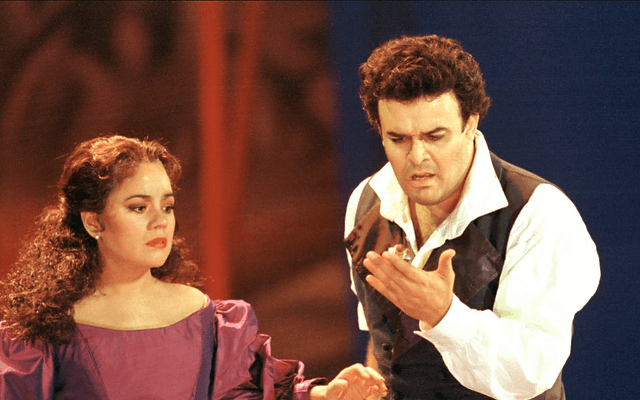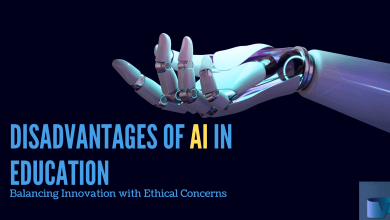
Rappaccini’s Daughter gives us the full range of Hawthorne’s art in microcosm. The complex of meanings and implications in the story demands careful analysis.
Author’s Introduction (Nathaniel Hawthorne)
Nathaniel Hawthorne is an American novelist, dark romantic, and short story writer. His works often focus on history, morality, and religion. Twice-Told Tales has given him fame.
Nathaniel Hawthorne is considered as one of the greatest fiction writers in American literature, he is best known for The Scarlet Letter (1850) and The House of the Seven Gables (1851).
Rappaccini’s Daughter Analytical Summary

A YOUNG man, named Giovanni Guasconti, came, very long ago, from the more southern region of Italy, to pursue his studies at the University of Padua. He is renting a room near the house of Rappaccini.
From his quarters, Giovanni looks at Beatrice, the beautiful daughter of Dr. Giacomo Rappaccini, a botanist who works in isolation. Beatrice is confined to gardens, which are filled with exotic poisonous plants grown by her father.
Having fallen in love, Giovanni enters the garden and secretly meets with Beatrice a number of times. He ignores the instructions of his mentor, Professor Pietro Baglioni, who has rivalry with Dr.Rappaccini. Professor Baglioni warns him that he should avoid Dr.Rappacci’s family.
Although this garden, directly referred to as Eden, immediately attracts Guasconti with its beautiful gardener and its gorgeous herbs and flowers, he senses a sinister aura permeating this paradise.
Giovanni notices Beatrice’s relationship with the plants as well as the withering of fresh regular flowers and the death of an insect.
Beatrice is a light-hearted and stunning young woman who embraces the shrub as her sister. On one occasion, Beatrice embraces a plant in a way that she seems part of the plant itself; then she talks to the plant,
“Give me thy breath, my sister, for I am faint with common air.”
Giovanni realizes that she is growing in poison and she has poison in herself.Eveything that is touched by her hand became poisonous. One day Giovanni throws bouquet but it seems to be withered in her hand.
Giovanni was surprised to see these happenings. Lisabetta offers to show Giovanni a path to the garden, fundamentally altering how he interacts with Beatrice.
At the end of this encounter, Giovanni reaches to touch the purple flowers, but Beatrice pulls his hand away. Where she has touched him, his wrist becomes bruised and aching for several days, further confirming that her body is poisonous.
After some days, Baglioni pays him a visit in his room, noting that Giovanni’s room smells faintly of poisonous flowers.
He then tells a story about how Alexander the Great was gifted a woman from India only to discover that her body was poisonous.
Baglioni tells that he has discovered Beatrice is the modern version of such a woman, made deadly by her father’s experiments, but he has secured an antidote from a colleague. Steering Giovanni’s course, Baglioni charges him to confront Beatrice and encourage her to drink it.
Giovanni leaves Baglioni to attend his regular meeting with Beatrice. On his way, he buys flowers for her, thinking that if they wilt in her hand, he will have proof that she is poisonous.
He was furious that she has made him like her. Beatrice insists that she never intended to harm him, only to love him for a little while. She says her father must have done it.
Giovanni hands her the antidote, explaining that it may restore them both to health. Rappaccini joins them, gazing at the two proudly. He explains that their poisonous bodies protect them from any harm mankind would wish to inflict.
But Beatrice contends she would have preferred being loved than feared by her fellow man, and she drinks the potion. As she dies, she asks Giovanni whether he did not have more poison in his soul than she.
Baglioni, who has been watching the scene from Giovanni’s window, cries out in triumph and horror, rebuking Rappaccini for creating a monster stranger than fiction in his attempt to interfere with Nature.
Secure in her own goodness, Beatrice will ascend to the region where the “Holy Virgin,” whom she calls on several times in the story, and that other Beatrice, Dante’s spiritual guide, dwell.
Rappaccini’s Daughter Character’s Analysis
Giovanni Guasconti
Giovanni Guasconti is protagonist of this story and he is man of action. He has come in Padua for medical studies. He takes a room on rent that and he sees the garden of Rappaccini through his room’s winter.
He sees his daughter and fell in love with her. He is intelligent and kind but can be selfish.
In so far as the tale can be considered as a tragic drama, it is the tragedy of his inadequacy, and his inability to survive the testing Ordeal that fate has prepared for him.
It is Giovanni’s tragedy because he is the only dramatically developed character. Neither Rappaccini nor Beatrice develop in relation to the events
Old Lady Lisbetta
She takes Giovanni to his room and she has information about Dr. Rappaccini. This is a minor character that appears a few time in story.
Beatrice
Beatrice Rappiccini is friendly and charming but lonely.She is source of the story’s controversy.
She helps her father Dr. Giacomo Rappaccini care for his garden that has poisonous plants.
She is poisonous and her body has moral virtues.She falls in love with Giovanni Guasconti when he begin courting her. She at the end proves her innocence by saying;
“My body, be fed with poison, but the spirit is God’s creature and needs love as its lovely food”
She was totally dejected by her lover for his mistrust, who condemned her honest and sacrificial nature of love.
Prof. Baglioni gives a medicine and she took a little bit of that.Shedied because poison had become part and parcel of her life, whereas the prescribed antidote proved fatal for her.
Signor Pietro Baglioni
Pietro Baglioni is a prominent physician of Padua, a university professor.Professor Baglioni is an elderly man and an old friend of Giovanni Guasconti’s father.
Baglioni takes it on himself to look after Giovanni while he is in Padua. His professional rival in Rappaccini. He advices him.
Dr. Giacomo Rappaccini
He in an antagonist in story. He is a scientist. His greatest work is his garden and plants in his garden are poisonous. He has no love for humanity. He has great love for science and sacrifices his daughter.
Dr. Giacomo Rappaccini is a thin and sickly man who holds science in higher regard than humanity. He is accomplished medical scientist whose greatest work is a vibrant, exotic garden from whose plants he has made many powerful medicines.
He is a selfish father. Rappaccini has raised his daughter Beatrice around poisonous plants so that she is poisonous. He has more interest in his field than humanity.
Genre
Science Fiction, Fantasy
Tone
Pessimistic
Rappaccini’s Daughter Themes
- Knowledge and Sin
- Different Gender Roles
- Negative use of science
- Humanity
- Love and Passion
Knowledge and Sin
Hawthorne twice compares Rappaccini’s garden to Eden, calling to mind the Biblical story of man’s fall from grace in the Garden of Eden.
In that story, Adam and Eve live in a utopian garden and God’s only rule for them is not to eat the fruit of the Tree of Knowledge of Good and Evil. Unfortunately, they eat the fruit, and God makes them mortal and banishes them from Eden.
Hawthorne’s story parallels this Bible story, as Beatrice and Rappaccini tend an isolated garden, and it is Rappaccini’s thirst for knowledge that leads to his and Beatrice’s downfall.
Like the Biblical story, “Rappaccini’s Daughter” warns readers of the dangers of pursuing knowledge, and it additionally warns about the foolishness of playing God by trying to interfere in the world’s natural order.
“He would sacrifice human life,” Baglioni says, “his own among the rest, or whatever else was dearest to him, for the sake of adding so much as a grain of mustard-seed to the great heap of his accumulated knowledge.”
This quote explicitly associates Rappaccini’s quest for knowledge with evil and inhumanity.
Overall, Hawthorne’s parallel between Rappaccini’s garden and the Garden of Eden is not simply suggesting that humans are sinful that lesson is as old as time.
Difference Gender Roles
“Rappaccini’s Daughter” depicts numerous differences between how men and women interact with the world around them.
All the men (Giovanni, Baglioni, and Rappaccini) have professions, while the women (Beatrice and Lisabetta) manage their households. Men have formal educations, while women have knowledge that they have learned from going about their daily lives.
Negative Use of Science
It is most important theme of “Rappaccini’s Daughter”. Dr.Rappaccini uses his knowledge of science for negative learning. He has intentions of harming the humanity.
He has poisoned his daughter by raising up in the influence of poisonous plants and he has evil intentions of growing a poisonous race of humans who would rule others.
So, this theme goes off negative views of science which can go against mankind. This negative use of science makes his daughter poisonous.
Beatrice touches plants and they wither. When Giovanni touches her, he became poisonous. This thrust of Rappacccini destroys his daughter as well as Giovanni. The sinful knowledge leads his daughter to downfall and she dies due to poison.
Humanity
Beatrice is epitome of humanity. She symbolizes pity for mankind and also she symbolizes love, humanity. She is most virtuous of all the characters
The theme of humanity runs side by side. She has concerned even for little insect.Dr.Baglioni hates Rappaccini because he says that he has bad intentions for humans.
Rappaccini is more in favor of science than humanity. He can use science for harming mankind. The influence of poison has destroyed two human beings.
Love and Passion
Love is different from passion. Love is something more deep, sincere and truthful as compare to passion. Passions are very strong feelings, most likely intense emotions.
In this story Beatrice was true in love but Giovanni had only passion. He has very intense longing for Beatrice.
He has intense attraction for her and it was even in the form of lust. There is difference between love and passion.
NOTE: This Post is written by “Ms. Yameena Yar Gondal”…



